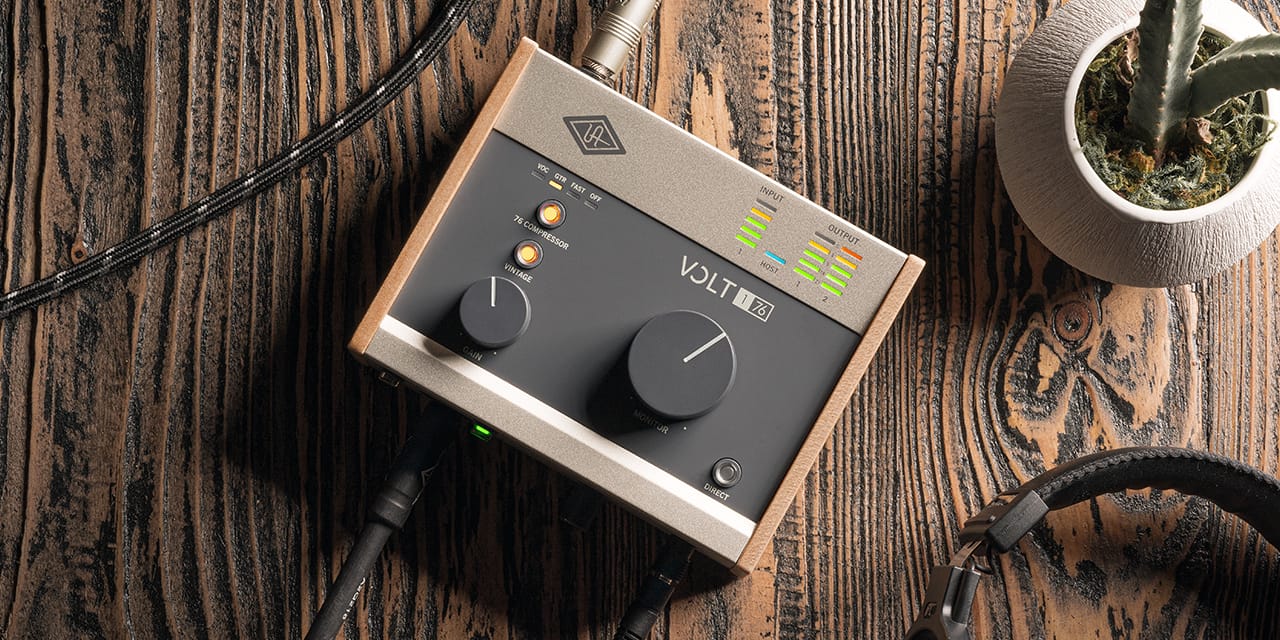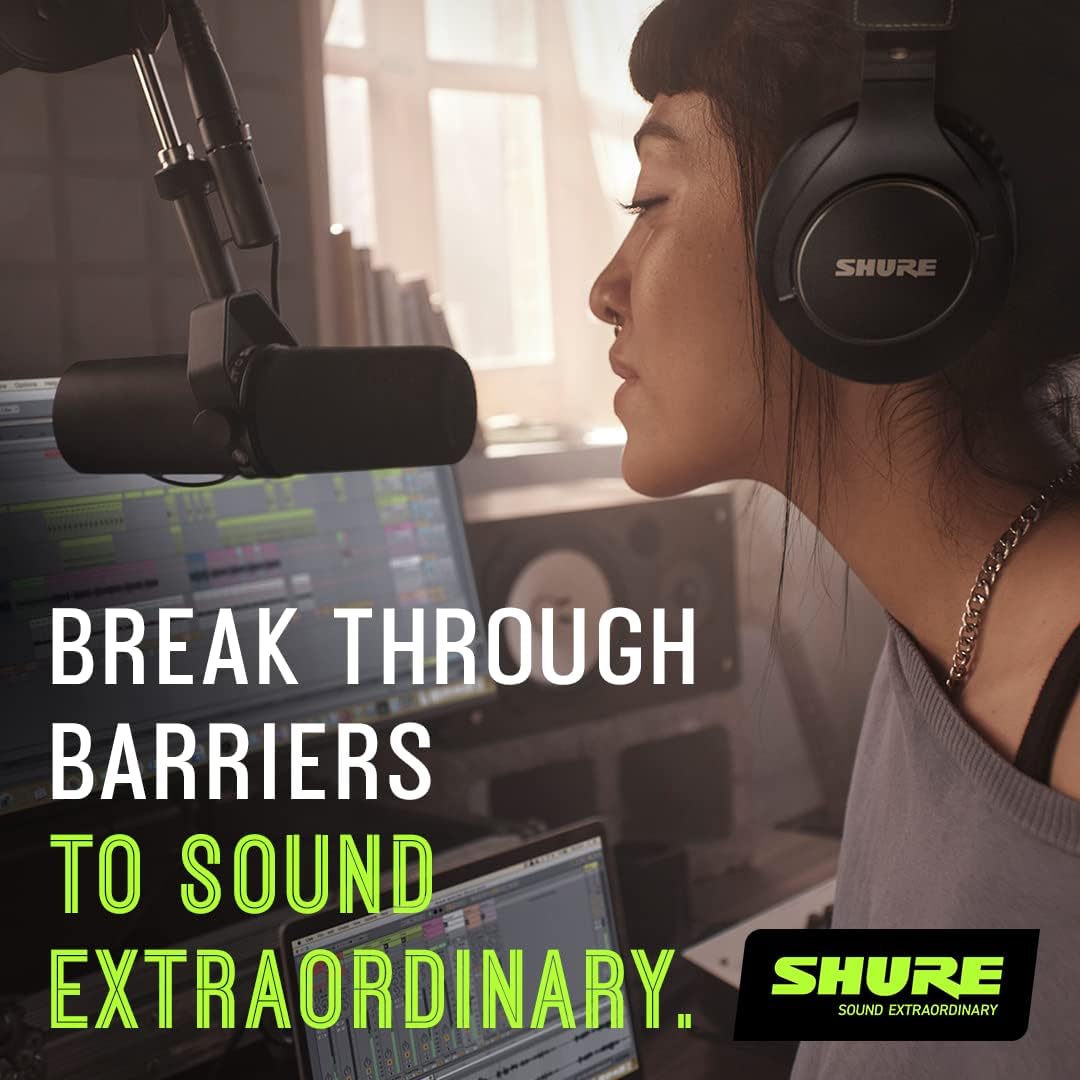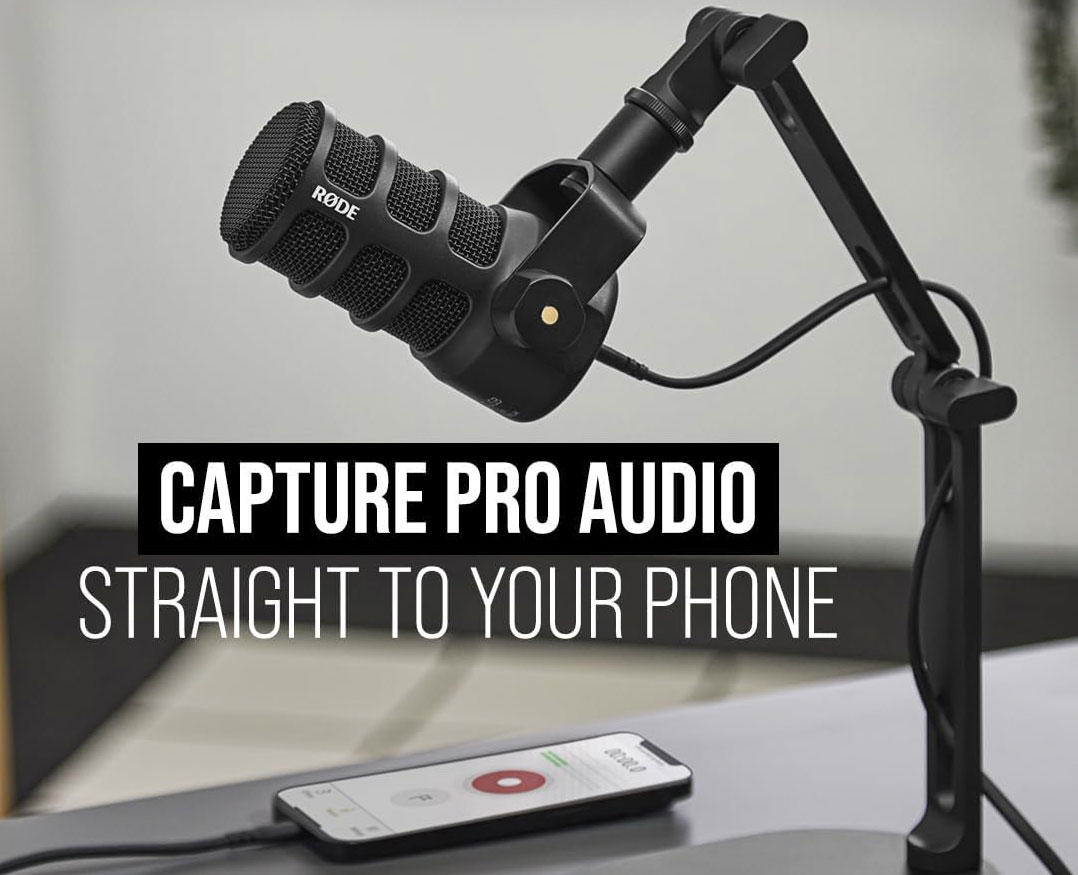
In today’s world, we find ourselves spending an extensive amount of time on video calls, be it for professional tasks, podcasting, or even pursuing our dream of starting a YouTube channel. The significance of high-quality audio in these interactions is often underestimated and can be a game-changer.
Interestingly, if elements like lighting or a quality of image from a web camera don’t meet the mark, we are quick to notice. This is because most web-conferencing software provides a self-view, allowing us to monitor our visual appearance.
Unfortunately, this is not quite the case when it comes to audio. Often, we remain blissfully ignorant of the quality of our sound output. This is due to the fact that we typically don’t get to experience the other end of our conversation, which frequently involves a highly-processed signal and low-quality audio interface.
This is unfortunate, because how we sound makes huge difference on people’s willingness to listen to us and the effectiveness of our communication. Investment in superior audio tools is key for a professional and effective digital communication.
One simple, effective, and popular method to enhance sound quality during audio calls is to use a headset. Many high-quality earbuds, such as those we recently reviewed, can be quite beneficial. However, for a professional-sounding audio output, especially in podcasting or streaming, a dedicated microphone like the ones discussed later in this article is essential.
Types of Microphones
When choosing a microphone that suits your specific needs, it’s crucial to grasp the differences between main features of typical microphones and weigh the advantages and disadvantages of each.
Let’s start by understanding the types of microphones we may be considering:
- Dynamic Microphones - A dynamic microphone typically produces a sound that is distinctively
rich and well-balanced. Most of these microphones feature a cardioid polar response pattern. This pattern
allows the microphone to focus on sound right in front of it, and minimize background noises and
reflected sounds abundant in non-studio environments. This ability is essential for producing a
cleaner recording in noisy environments such as: live concerts, typical office spaces full of noisy
neighbors and distracting sounds, or even your home office that is not professionally sound-proofed.
Cheaper microphones, such as a mic in your laptop or a web-camera, attempt to achieve the same results with software-level post-processing that usually damages the quality of audio and can periodically fade-out speaker’s voice itself.
One potential drawback of dynamic microphones is that these microphones require the speaker to be in close proximity with the microphone, for legible sound levels, typically about 3-6 inches or 8-16 centimeters away from speaker’s mouth. Due to its proximity requirement, the microphone will be prominently visible in your video frame. This can be a deal-breaker for you. Dynamic microphones also often require some sort of stand, or a microphone arm, to position it near the speaker’s mouth.
- Condenser Microphones - Contrarily, condenser microphones can pick up sound from a greater distance, making them suitable if you prefer the microphone out of your video frame or if you need to capture audio from multiple people in a room. However, for multi-speaker capture, the microphone must be non-directional, or all participants must be on the microphone’s active side. These microphones will struggle in noisy environments without digital post-processing of sound. They can, however, be conveniently placed on a desk, out of frame, also eliminating the need for pricey microphone arms. Not related to podcasting, but condenser microphones are also preferred in studio environments where background noise can be eliminated and condenser microphones can deliver outstanding performance.
- Shotgun Microphones - usually also condenser microphones, they feature a long, “shotgun” tube design (8 - 24 inches) with numerous side holes to cancel out sounds not originating from the front of the microphone. Being highly directional, they primarily capture sound directly in front of them. They offer a balance between dynamic and standard condenser microphones, allowing for more distance from the speaker while still minimizing background noise more effectively than regular condenser microphones. You will often find these microphones attached to video cameras.
When selecting a microphone, don’t overlook other crucial elements such as connectivity.
Microphones typically offer two connectivity options:
- USB - These microphones connect directly to a computer via a USB cable. While this is very convenient, it’s important to remember that all audio devices, including microphones, are analog devices, requiring an audio interface to convert the audio signal into a digital format that a computer or other digital device (like a smartphone or tablet) can process. When a microphone offers USB connectivity, it means the manufacturer has integrated an analog/digital converter and amplifier into the microphone itself. However, due to the limited space in most microphones, the quality of this built-in interface is unlikely to match that of a dedicated audio interface used with an XLR microphone. Whether the difference is substantial
will depend on execution and your needs.
- XLR - This analog cable necessitates an audio interface to convert the analog signal into a digital format for transmission via a USB cable to your computer or other device. High-quality audio interfaces can be pricey. We’ve suggested several affordable options below our list of recommended microphones. Regardless, a dedicated audio interface will always surpass the performance of a miniaturized one integrated into a microphone, making XLR connectivity the choice of many for serious audio work.
To summarize:
| Feature | Pros | Cons |
|---|---|---|
| Dynamic | Cleanest sound in noisy environments | Must be close to mouth and visible in frame |
| Condenser | Can sit further and be invisitble | Requires very quiet environment for clean sound |
| Shotgun Directional | Compromise between Dynamic and Condenser. Can sit further, but focuses on sound directed to its front | Still picks up more noise than a dynamic microphone |
| Lavalier | Attached to body, invisible | Non-natural, lower-grade sound, picks up noises of moving cloths |
| USB | Can be plugged directly into computer, phone, etc. | Lower-quality sound, less options to control |
| XLR | Higher quality sound if plugged into a good audio interface | More expensive, since it requires more equipment |
Head to Head Comparison
We tested many microphones in a variety of conditions, including Zoom and Teams calls. Here are some that we liked and would recommend to our friends and families.
The prices indicated are the ones at the time of writing this review.
| Microphone Model | Type | Price | Connection | Sensitivity |
|---|---|---|---|---|
| FIFINE K688 | Dynamic Cardioid | $69.99 | XLR and USB | -58dBV/Pa |
| RØDE VideoMic GO || | Shotgun Condenser | $99.00 | USB-only | -31dBV/Pa |
| RØDE NT-USB Mini | Cardioid condenser | $99.00 | USB & 3.5mm Audio | - |
| Deity V-Mic D4 | Shotgun condenser | $99.00 | USB & 3.5mm Audio | -22dBV/Pa |
| Sennheiser Professional Profile | Cardioid condenser | $129.00 | USB | - |
| Audio-Technica AT875R | Shotgun, Line + Gradient Condenser | $169.00 | XLR | -30dBV/Pa |
| RØDE PodMic USB | Dynamic | $199.00 | XLR and USB | -57dBV/Pa |
| RODE NT1-A | Large diaphragm cardioid condenser | $269.00 | XLR | -31.9dBV/Pa |
| Shure SM7B | Dynamic | $398.00 | XLR-only | -59dBV/Pa |
Microphone sensitivity is a measure important for dynamic microphones, and it indicates how much pre-amplification a microphone needs to sound at normal volumes, without audio post-processing. Higher negative number generally indicates “quieter” microphone that requires more signal boosting to sound loud enough. Inline microphone activators, discussed further in this article, are cheap and effective pre-amplification options that can be very helpful in making “quiet” microphones loud enough.
If you have heard a lot about Blue Yeti or Razer microphones and are wondering why they didn’t make our list, the answer is simple - that’s because we think they are lower-quality, over-priced devices that we would not recommend to our friends or families.
For condenser microphones, we feel RØDE NT-USB Mini and Sennheiser Professional Profile are excellent, easy USB choices that we highly recommend.
We also absolutely loved RØDE VideoMic GO II for on-camera shotgun choice. It’s extremely high-quality microphone and much cheaper than its bigger brother in Rode VideoMic NTG. NTG does add more on-microphone controls and longer tube, but GO || is very capable at less than half the price. Another very interesting shotgun option is Deity V-Mic D4.
For high quality sound, in environments that are not sound-treated or at least very quiet, we strongly recommend dynamic microphones for their ability to deliver an intimate, broadcast-level sound. To achieve this, however, you will need a microphone arm to position the mic close to your mouth; otherwise, your speech will sound distant and faint.
Among the microphone arms we’ve tested, we love RØDE’s PSA1+ for its construction quality, reliability, and ergonomics/flexibility. We have never had a problem with it with microphones heavy or light. It is certainly our favorite, but its robust build comes with a high price tag. Other popular, high-quality options are Gator’s, Logitech, and Elgato arms. Of special note is the Elgato Low Profile arm, which stays close to the desk and out of camera’s view, which can be extremely helpful in some setups. A reliable budget option is YOUSHARES. The drop in quality and ergonomics is somewhat noticeable, but it’s still reliable a capable boom arm for half the price of RØDE and Gator. We would try Elgato LP before going for YOUSHARES, however.
| Model | Price | Horiz Reach | Vert Reach | Load Capacity |
|---|---|---|---|---|
| RØDE PSA1+ | $129.00 | 37” (94cm) | 34” (86cm) | 2.6lbs (1.2kg) |
| Gator Deluxe | $122.00 | 32” (82cm) | 32” (82cm) | 4.4lbs (2kg) |
| Elgato Wave Suspension | $99.00 | 31” (78cm) | 30” (75cm) | 2.2lbs (1.0kg) |
| Logitech (formerly Blue) Compass | $99.99 | 32” (81cm) | 32” (81cm) | 2.4lbs (1.1kg) |
| Elgato Wave Mic Arm Low Profile | $79.99 | 29” (74cm) | n/a | 4.4lbs (2kg) |
| YOUSHARES | $69.99 | - | - | 3.0lbs (1.4kg) |
Furthermore, for XLR microphones you need an audio interface. There’re a lot of very nice and very expensive ones. One of our absolute favorites is the famous and powerful RØDECaster Pro II mixer at $699. This device, of course is a professional mixer able to drive sophisticated workflows. It competes with the likes of Mackie DLZ Creator at $799.
More on the affordable/simpler side the audio interfaces that can drive 1-2 microphones or a microphone and another instrument, are:

| Model | Price | Gain Range | Resolution | Released |
|---|---|---|---|---|
| Mackie Onyx Artist 1X2 | $89.99 | - | 24-bit/192kHz | Oct 2017 |
| Focusrite Scarlett Solo 3rd | $129.99 | 56dB | 24-bit/192kHz | Jun 2019 |
| RØDE AI-1 | $129.00 | 60dB | 24-bit/96kHz | Dec 2017 |
| Elgato Wave XLR | $159.00 | 75dB | 24-bit/96kHz | Jul 2021 |
| Solid State Logic SSL 2 | $179.99 | 62dB | 24-bit/192kHz | Jan 2020 |
| Universal Audio Volt 176 | $199.00 | 55dB | 24-bit/192kHz | Oct 2021 |
| MOTU M2 2x2 | $199.95 | 60dB | 24-bit/192kHz | Nov 2019 |
| TC Helicon GoXLR MINI | $229.00 | 72db | 24-bit/48 kHz | Sep 2019 |
| Audient iD14 MKII | $299.00 | 58dB | 24-bit/192kHz | Feb 2021 |
Gain range is an important characteristic of the audio interface. If you have a “gain-hungry” microphone, one with high sensitivity then you need an audio interface with large gain range or will need a preamp. You shouldn’t assume all of the gain range is easily usable, however. For example, Elgato Wave XLR specs state mouthwatering 75dB gain range, but the reality is that last half of that gain creates terrible noise levels. So the quality of the circuitry and pre-amping in the audio interface is more important than sheer numbers.
Motu M2, Solid State Logic SSL2, and Focusrite Scarlett are fan favorites among podcasters. We are also huge fans of Universal Audio, its legendary history and consistent high quality. UA’s Volt series interfaces are interfaces you should at least try.
The UA Volt 176, featured in this list, is our clear favorite for driving a single microphone. It has no problem driving a gain-hungry Shure SM7B even without a preamp, and the entire gain range is clean and completely noise-free. We absolutely love everything about this audio interface and wouldn’t trade it for any other.
Last but not least, for many dynamic microphones, you’ll likely also need a clean preamp that you can connect with an XLR cable. This connection runs between the microphone and the audio interface. The reason for this need is that dynamic microphones are not powered, resulting in potentially low volume without a preamp. Avoid maxing-out the gain on your audio interface, as this can introduce undesirable baseline hissing noise. Two popular preamp options include:
| Model | Amplification | Price |
|---|---|---|
| Cloudlifter CL-1 Mic Activator | 25dB | $149.00 |
| TRITON AUDIO FetHead in-Line Microphone Preamp | 27dB | $54.99 |
We use FetHead regularly and really like it. It is manufactured by a reputable brand, Triton, in Netherlands and is a high-quality product. FetHead’s much lower price compared to CloudLifter is not an indication of lower quality. Cloudlifter does have a different form factor that some may appreciate, however.
Remember to activate the “phantom power/48v” on your audio interface to power the preamp. Without a preamp or mic activator, phantom power is typically used for condenser microphones but not for dynamic ones, as the former requires power and the latter does not.
Now, without further ado, let’s determine the best option for a microphone!
And the Bestest is…
Without a shred of a doubt Shure SM7B has been the best-sounding, most powerful and by far the most legendary microphone, for many years now. It is the de facto industry standard, used by world’s leading vocalicsts, broadcasters/podcasters, and streamers.

We cannot possibly love this amazing microphone more. Quality is great, sound is breathtaking, and it has so much history! But it is quite expensive, too, especially since it is an XLR dynamic microphone requiring boom arm and audio interface. So, to our friends and family, who are not professional podcasters or Youtubers, we would highly recommend RØDE PodMic USB, instead.
Also Great
RØDE PodMic USB is a very good microphone. It would have easily been our favorite microphone if Shure SM7B didn’t exist. This RØDE model, as its name implies, does support USB without any additional equipment, which SM7B does not, and RØDE actually outperforms USB models of Shure, in our opinion. Given this, PodMic USB may be the obvious choice on the go, when taking a lot of extra equipment is problematic. It’s also worth noting that PodMic does support XLR in addition to USB, so it has space to grow if you later decide to use it with an audio interface, instead of plugging it directly into a phone, computer, or a camera.

We could have ended our review here. Between Shure and RØDE there is not much anybody should need from a Dynamic microphone, except for the fact that an absolute gem of a microphone like Fifine does exist for a mind-blowingly low price of $69.99 and we could not ignore it.
Budget Pick - the Best Deal
Once you listen to the rich, balanced sound of FIFINE K688 and see its surprisingly affordable price tag it will be clear why it is the winner of the prestigious iF Design Award, for 2023.

Why You Should Trust Us
It's actually quite straightforward: we do not (repeat, do NOT) sell our opinions. We're not owned by any large corporation, we aren't accountable to any profit-driven Wall Street stakeholders, and our motivation for starting this venture stemmed from genuine care. Every time we sought to make an informed purchase, we consulted freely available and once reputable websites, now owned by large media conglomerates, or specialized review websites that required a paid subscription. We found that despite the authors boasting impressive degrees and purported expert knowledge, their recommendations were often lackluster, to put it politely. We even developed an inside joke, based on our repeated experiences, that whatever these websites recommended served as a useful guide for knowing what to avoid. Alas, it didn't help much in knowing what to purchase.
Fueled by this frustration, our website was born. We offer our sincere opinions and recommend products that we personally own, enjoy, or would recommend to our friends and family. Nothing more, nothing less. What you receive here is the unvarnished truth from your fellow consumers. And that is a promise we never intend to break